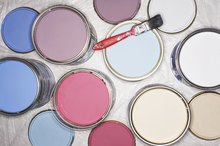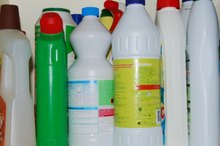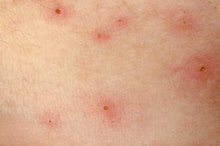What Are the Treatments for Skin Irritations From Creosote?
Creosote is a mixture of chemicals for various uses, including as pesticides, wood preservatives, roofing, and road paving. The International Agency for Research on Cancer identifies creosote as a human carcinogen. Ingestion of high levels of creosote has many negative health effects, including stomach pains, respiratory problems, skin irritation, and kidney and liver damage. Creosote is an irritant to the skin and causes skin damage such as blistering or peeling upon contact.
Symptoms of Creosote Poisoning
You can be exposed to creosote by working in an industry with creosote use, such as in coke-producing or asphalt industries, living in a house treated with creosote, eating fish from contaminated water or drinking water contaminated by a hazardous waste site. Medical tests are not available to determine creosote exposure. Doctors can take test tissue, blood and urine samples to detect chemicals in creosote, such as phenols and pyrene, but these tests are unusual because of the requirements of special laboratory equipment. Symptoms of creosote skin exposure include redness and a burning sensation 1. You may also experience vomiting, respiratory difficulties, headaches and convulsions.
- You can be exposed to creosote by working in an industry with creosote use, such as in coke-producing or asphalt industries, living in a house treated with creosote, eating fish from contaminated water or drinking water contaminated by a hazardous waste site.
- Doctors can take test tissue, blood and urine samples to detect chemicals in creosote, such as phenols and pyrene, but these tests are unusual because of the requirements of special laboratory equipment.
Decontamination
Side Effects of Formaldehyde Exposure
Learn More
Remove contaminated clothes immediately upon creosote exposure on skin. Rinse and wash skin with large amounts of cold water and soap for at least 10 minutes. A thorough showering and shampooing may be required to remove chemicals from the scalp and hair. Contact a physician to examine the skin if pain continues after washing.
- Remove contaminated clothes immediately upon creosote exposure on skin.
- Contact a physician to examine the skin if pain continues after washing.
Treatment
Avoid performing activities that may cause further exposure to creosote. Avoid sunlight, which may aggravate the skin condition. Treat symptoms of burning and irritation of skin topically with lotions, creams or ointments such as aloe vera gel, which has natural healing properties. Ask your physician or pharmacist for the most appropriate product.
- Avoid performing activities that may cause further exposure to creosote.
- Avoid sunlight, which may aggravate the skin condition.
Related Articles
References
Writer Bio
Ellice Lin graduated from the University of California, Irvine, with a Bachelor of Science degree in biology. She continued her education and earned a master's degree from Rice University. She is an environmental consultant writing air quality reports in Southern California.









